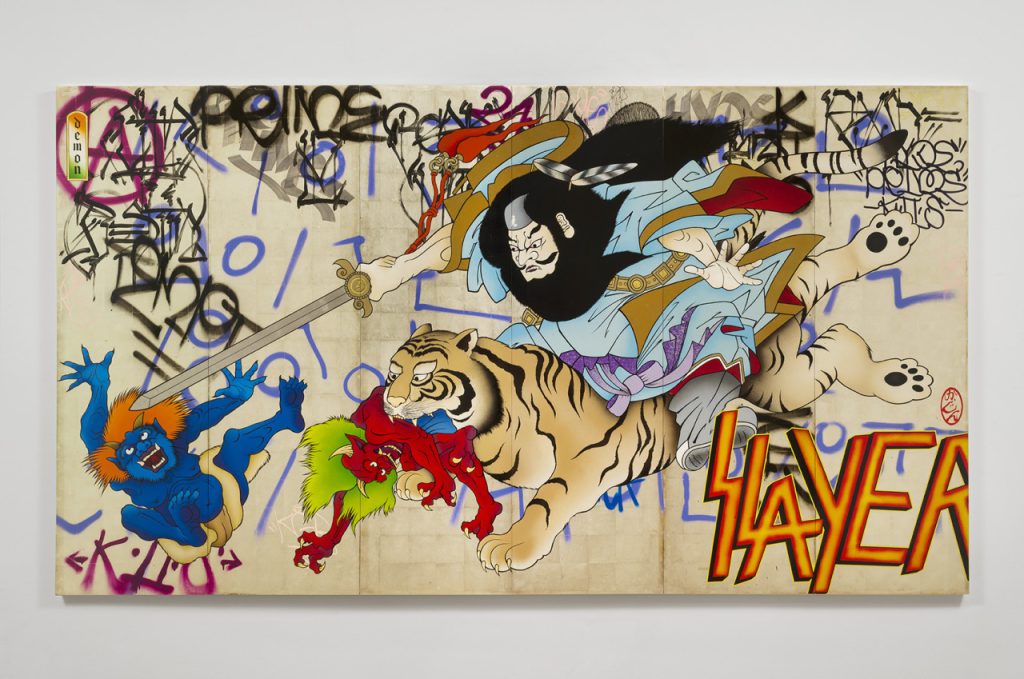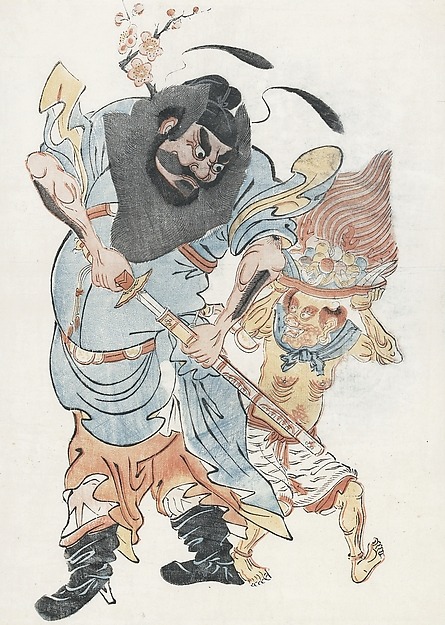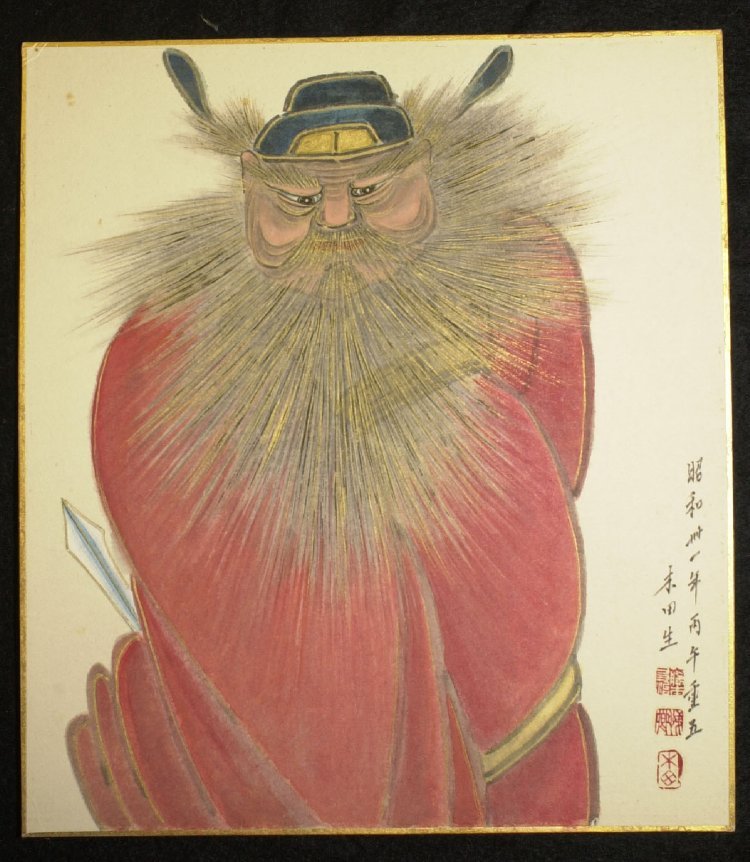


Gajin Fujita portrays the Japanese mythological figure Shoki in his painting Demon Slayer (pictured top). A vanquisher of demons and ghosts, Shoki actually derives from 7th century Chinese folklore, widely known as Zhong Kui.
In the Dictionary of Chinese and Japanese Art, author Hugo Munsterberg described: “In China, [Zhong Kui] is canonized with the title of ‘Great Spiritual Chaser of Demons.’ He is usually represented in art as a large ugly man, wearing a scholar’s hat, a green robe and large boots, and is usually shown either stabbing or trampling on demons.”
In Fujita’s rendering, Zhong Kui’s attributes are well represented, with exception to his “scholar’s hat.” Instead, a backwards worn Kangol cap takes its place – an intentional nod to hip hop culture.
On another note, the “Slayer of Demons” is subject of a new fantastical Chinese film titled Zhong Kui: Snow Girl and The Dark Crystal, released earlier this year. Click here to view the trailer.
Gajin Fujita: Warriors, Ghosts and Ancient Gods of the Pacific is now in its final week and on view through July 2, 2015.
IMAGE: (clockwise from top) Gajin Fujita, Demon Slayer, 2015, spray paint, paint markers, Mean Streak, 12k white gold, 24k gold and platinum leaf on wood panels6 panels, overall: 60 x 108 x 1 ¾ in. (152.4 x 274.3 x 4.4 cm); Fujimoto Mokuden, Shoki zu (Zhong Kui), 1966, Japan, Collection of The British Museum, London; Artist unknown, Demon-Queller Zhong Kui, 18th century, China, Collection of Metropolitan Museum of Art, New York
